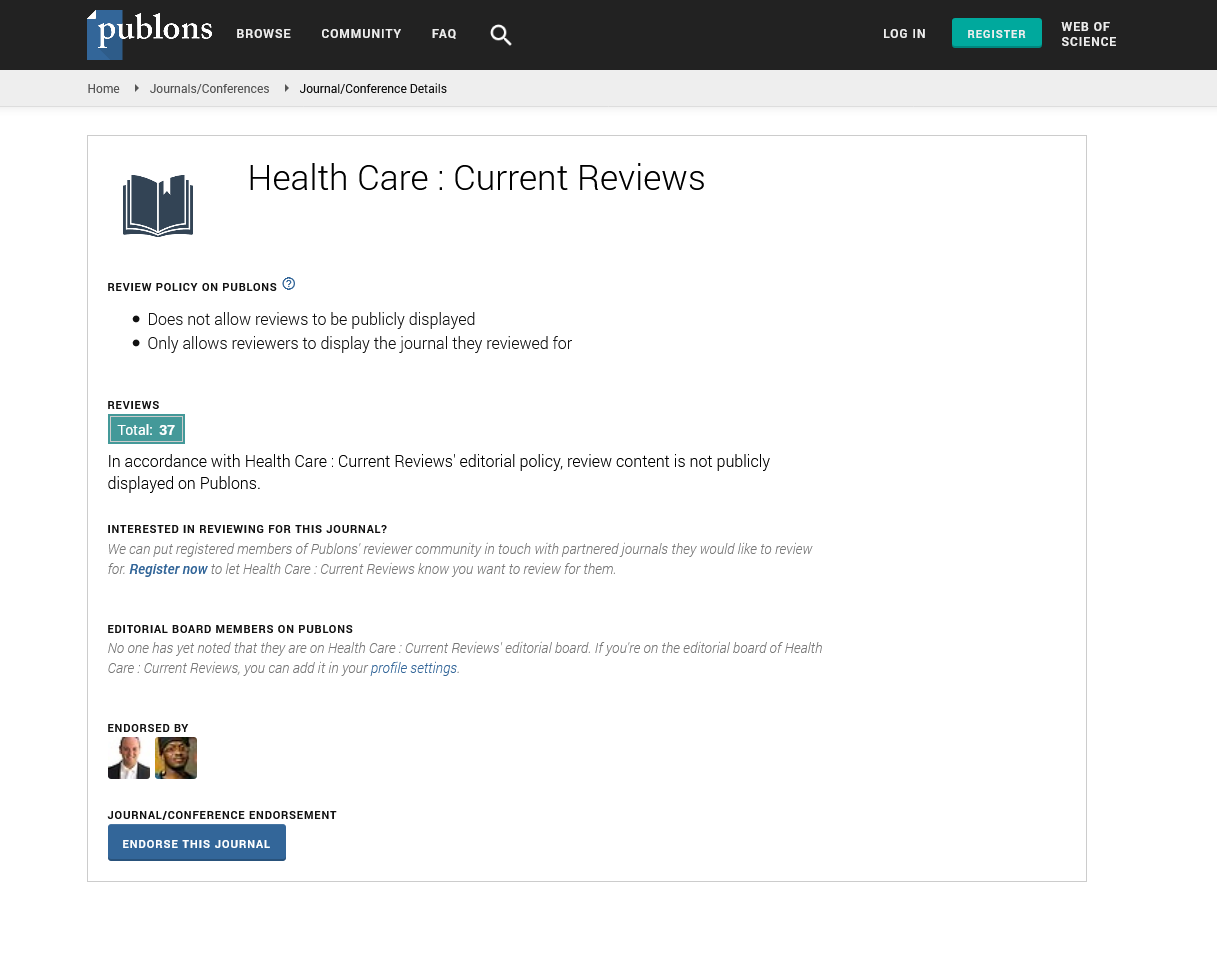Indexed In
- Open J Gate
- Academic Keys
- RefSeek
- Hamdard University
- EBSCO A-Z
- Publons
- Geneva Foundation for Medical Education and Research
- Google Scholar
Useful Links
Share This Page
Journal Flyer
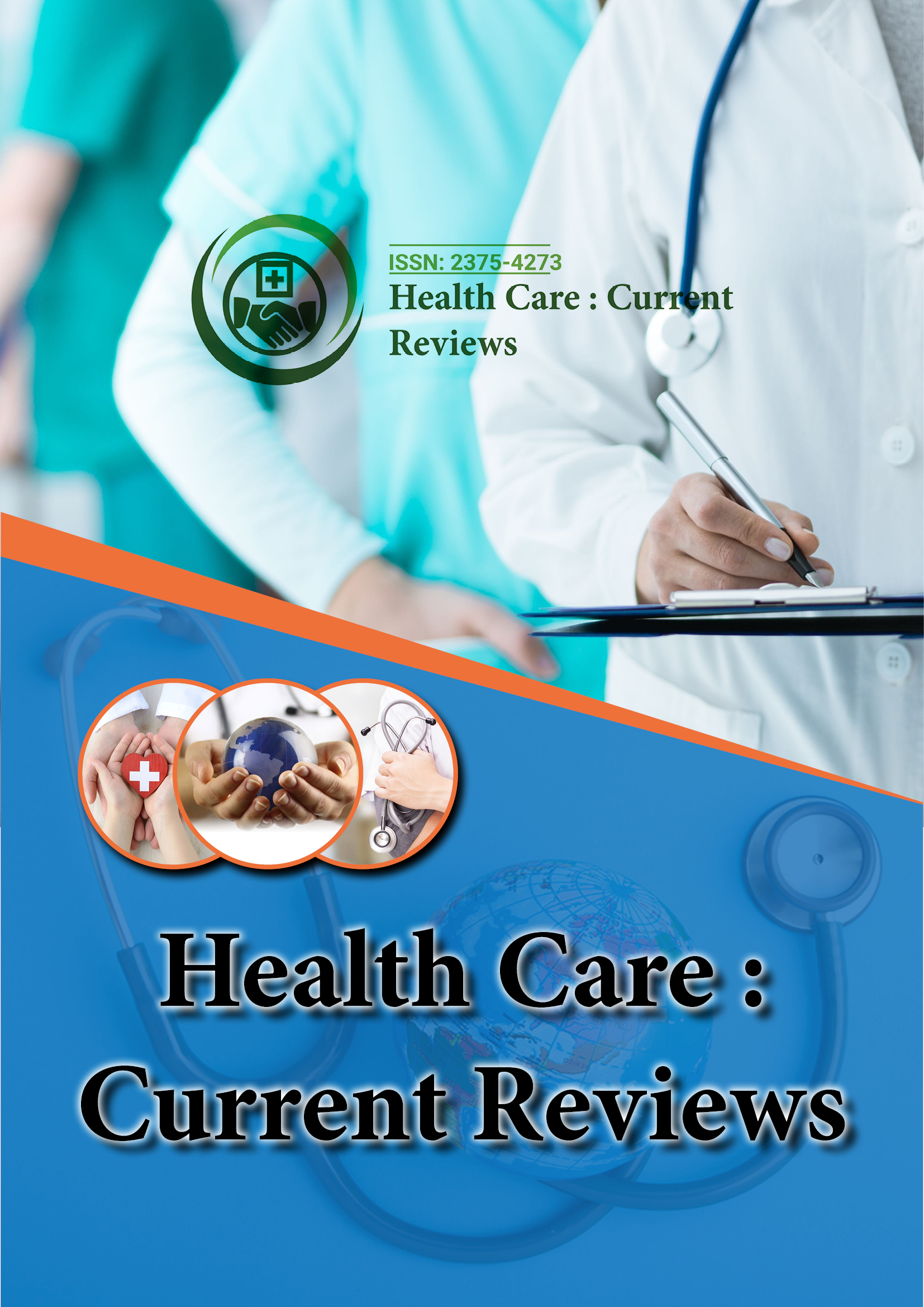
Open Access Journals
- Agri and Aquaculture
- Biochemistry
- Bioinformatics & Systems Biology
- Business & Management
- Chemistry
- Clinical Sciences
- Engineering
- Food & Nutrition
- General Science
- Genetics & Molecular Biology
- Immunology & Microbiology
- Medical Sciences
- Neuroscience & Psychology
- Nursing & Health Care
- Pharmaceutical Sciences
Research Article - (2023) Volume 11, Issue 1
Medical Errors: The Need for Institutional Change to Ensure Patientâs Safety
Naima Rasool1* and Mohammad Nabeel Mustafa22Department of Management Sciences, Shaheed Zulfiqar Ali Bhutto Institute of Sciences and Technology, Karachi, Pakistan
Received: 04-Jan-2023, Manuscript No. HCCR-23-19521; Editor assigned: 06-Jan-2023, Pre QC No. HCCR-23-19521; Reviewed: 20-Jan-2023, QC No. HCCR-23-19521; Revised: 26-Jan-2023, Manuscript No. HCCR-23-19521; Published: 03-Feb-2023, DOI: 10.35248/2684-1320.23.11.331
Abstract
Background: Medical Errors (ME) are the preventable adverse effects of medical care, resulting in numerous deaths annually worldwide. In Pakistan situation is more complex, due to overly populated hospitals, fewer underpaid overworked doctors and paramedics, no policy to deal with the subject, and seldom any checks and balances. This study is an effort to sensitize and equip our surgical trainees and paramedical staff to recognize and deal with medical errors which along with the help of institutional management, will bring a positive change in the clinical setting to decrease the incidence of errors while ensuring patients safety.
Methodology: A structured Pre-workshop questionnaire was given to the participants to fill out; it was followed by a PowerPoint presentation along with a discussion. A 12 mins long teaching video from the Center of Bioethics and Culture (CBEC) archive was shown, which was followed by an interactive discussion. Participants were asked to evaluate the Workshop on a structured Performa. A Post-workshop survey was done after 04 weeks to assess the impact of the activity in the clinical settings of the participants. Data were analyzed by qualitative and quantitative methods. For the quantitative part, emerging themes were analyzed using NVivo software.
Results: There were 21 participants from the National Institute of Child Health, Karachi (13 paramedics/08 doctors) while 16 were from Fazaya Ruth Pfau Medical College, Karachi (02 paramedics, 14 doctors). The preliminary coding after the clustering of verbatims was developed. A total of 03 main themes emerged, based on participants’ knowledge, causes/contributing factors, and ethical implications of medical errors.
1-In the theme of knowledge, the sub-themes that emerged were, “wrong medication and wrong diagnosis”.
2-In the theme of causes and contributing factors, participants used the verbatims of "commonest error is Senior doctor's behavior and is their responsibility " behavior and responsibility, lack of knowledge and shortage of staff”.
3-In ethical implication, “burnout due to stress” was the commonest sub-theme.
After 04 weeks, participants were asked about steps taken to reduce the error events. The responses were grouped under the “need for administration’s cooperation, SOPs following, and documentation” codes.
Recommendations: Training, sensitization and realization of the problems related to medical error are the need of the hour.
The change at the institutional level is the key to curbing the problem.
Keywords
Medical errors; burnout; medication errors; preventable errors
INTRODUCTION
Medical errors (ME) are the preventable adverse effect of health care. These everyday occurring hazards are directly related to patient safety, which may result in inadvertent and irreversible injury to the health of patients, prolonged hospitalization, increase in the cost of treatment, and even death worldwide [1]. It is most likely to occur in highly sensitive areas of the hospitals like ICUs, operation theaters, and emergency rooms [2].
Approximately the health of 07 million people is getting injurious annually in the United States because of only "medication errors" which cost 3.5 billion per year per annum worldwide [3]. The commonly reported errors are medication errors, miss or missed diagnosis, overzealous investigations and treatment, surgical mishaps, equipment/technology failures, pressure sores, falls, and burns [1,2].
In Pakistan, the only available study about countrywide statistics shows that medical errors are the 8th leading cause of death [4]. Not to our surprise, many go unnoticed and unreported; the actual figure may be very high.
As most of the time, medical error is a preventable phenomenon. The factors responsible for it need to be analyzed. The most apparent and reported reasons are lack of training and awareness among our paramedics and doctors at their under or postgraduate level [5]. Considering this fact, A training session was organized to enable surgical trainees and paramedical staff of two tertiary care hospitals in Karachi, in enhancing their understanding of medical errors and strategies to deal with them. After 04 weeks of this training session, according to the understanding of the participants, their views were collected about bringing positive change in their clinical setting to reduce the incidence of medical error.
Methodology
Study setup
A pre-workshop proforma was given to the Surgical trainees and paramedical staff of public and Armed Forces Hospitals (Table 1). A training workshop including a PowerPoint presentation was organized about definitions, types, examples, root causes, disclosure of medical errors and their repercussions. Finally the ethical implications after the occurrence of incidence upon themselves were also asked.
| No. | Variable | NICH | FRPMC |
|---|---|---|---|
| 1 | No of Participants | 21 | 16 |
| 2 | Gender (male/female) | 7/14 | 02/14 |
| 3 | Medics/Paramed | 08/13 | 14/02 |
Table 1: Demographics of Participants
It was followed by a 12 mins video from the CBEC teaching archive, named “to err is human “,along with a discussion and daily life examples and steps that could have been taken to curb them [6]. Workshop evaluation proforma was given to the participants to assess the acceptance and effectiveness of the workshop (Table 2).
| Item | Rating |
|---|---|
| (3 excellent, 2-good, 1-needs improvement) | |
| Contents related (yes/No) | |
| Content: Useful and related to the workshop | 3 |
| Content: Practical to the participants’ need | 3 |
| Content related to the level of the participants | 02 (No) |
| Competence of Instructor | 3 |
| Effective activities and visuals | 3 |
| Overall rating | 3 |
Table 2: Results of workshop evaluation
A Post-workshop survey was done for the impact of the activity at 04 weeks and later, based on one question asked through emails or messages.
Study design
(Quantitative–cross-sectional and Qualitative-Phenomenology)
NVivo software for the qualitative part.
Duration–06 weeks
Study participants and demographics
Surgical trainees and paramedical staff of two tertiary care hospitals in Karachi.
Results
In the Armed Forces Hospital (PAF base Faisal, Karachi)–among 16 participants, 02 were male and 14 were female. 14 medics and 02 paramedics were included.
While in public sector hospitals (NICH)–among 21 participants, 7 were male and 14 were female. While 08 were medics and 13 were paramedics.
Regarding, Workshop evaluation proforma, quantitative ratings of excellent, good and needs improvement (3, 2, and 1 respectively) were given to the contents, instructor, visual activities and overall rating. All were rated 3 as excellent except 01 point, which was “contents related to my level”, which required a “Yes” or “No” answer.
Pre-workshop Performa verbatim was analyzed on NVivo software. Based on this, 03 main themes emerged named, “knowledge of ME”, “causes and contributing factors”, and “ethical implications of ME”.
In knowledge about ME, the subthemes that emerged based on verbatim used by participants were “wrong medication, misdiagnosis, technical error, and errors by doctors or staff” (Chart-1).
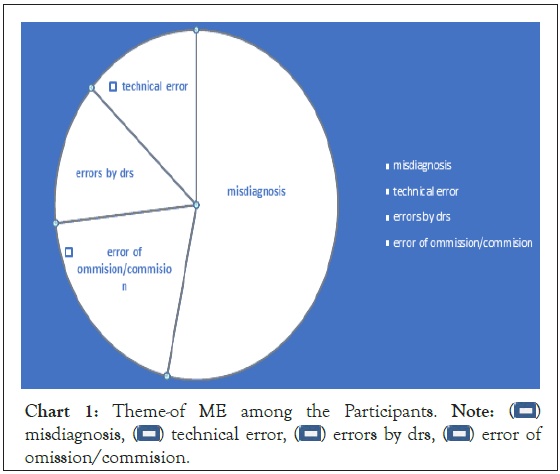
Chart 1: Theme-of ME among the Participants. Note:  misdiagnosis,
misdiagnosis,  technical error,
technical error,  errors by drs,
errors by drs,  error of omission/commision.
error of omission/commision.
Causes and contributing factors, most used verbatim were “lack of knowledge, senior’s negligence, less staff, huge numbers of patients, and work overload” (Chart-2).
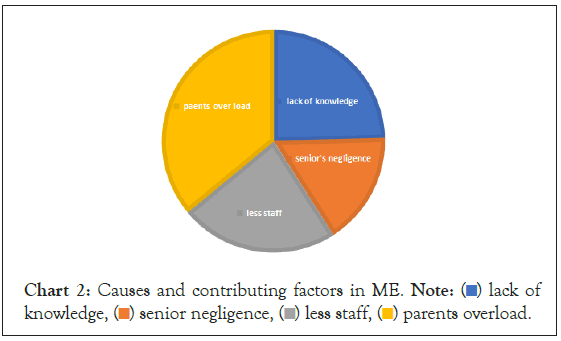
Chart 2: Causes and contributing factors in ME. Note:  lack of knowledge,
lack of knowledge,  parents overload.
parents overload.
As far as ethical implications are concerned, “burnout” was the most used verbatim (Chart-3).
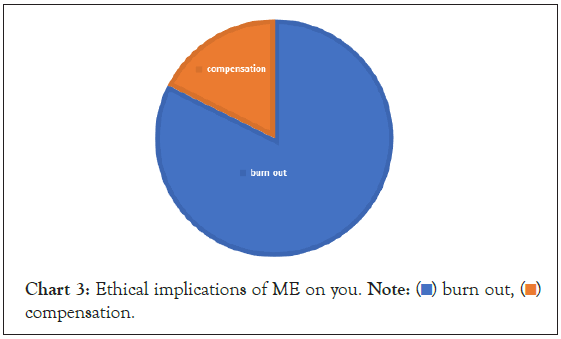
Chart 3: Ethical implications of ME on you. Note:  compensation.
compensation.
A post-workshop survey was done after 04 weeks over a phone message about “steps taken/ needs to be taken to reduce ME at their workplace”. The answers were, “the administration must be more cooperative”, staff should be more, “proper documentation”, and “check and balance” (Chart-04).
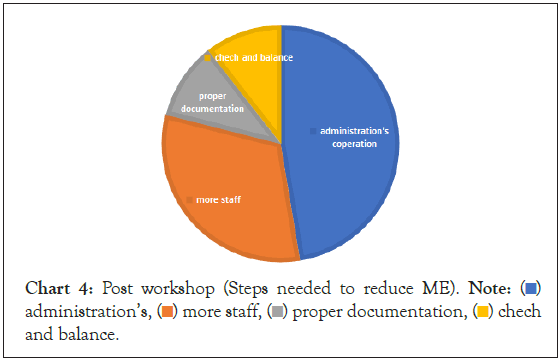
Chart 4: Post workshop (Steps needed to reduce ME). Note:  administration’s,
administration’s,  chech and balance.
chech and balance.
Discussion
As ME in a clinical setting can be prevented by curbing the causes, the incidence of ME can be significantly reduced. The literature search showed the probable contributing factors of ME are workload, communication gaps, inadequate documentation, lack of checks and balances, and lack of knowledge about ME [6,7]. Generally, during undergraduate or post-graduate training, medicine is taught but attitudes and ethical values are thought to be caught. It’s considered that these understandings are diffuse in students through the hidden curriculum. Students learn them from watching their supervisors and seniors, but it leaves a lot to chance.
Though literature is sparse regarding the facts and figures in Pakistan, it was found and felt that there is no robust training for clinicians and paramedical staff about the causes of medical errors and what to do if something bad happens in the clinical settings [8].
To address this shortcoming, A focused 3 hours long training workshop was organized to sensitize paramedics and trainee doctors, about the types and occurrences of ME in a clinical setup. The participants were selected at various levels of their education and training according to their availability in their duty roster. A pre-workshop proforma was given to the participants about their baseline knowledge of ME. They were asked to give their feedback about the workshop on a standard Workshop evaluation proforma at the end of the workshop.
A post-workshop survey was done after 04 weeks to assess the utility of the training session.
After the familiarization of data collected on preworkshop proformas, the primary coding was done, a template was developed, and data interpretation was the final step.
The first theme that emerged using NVivo software was the knowledge of ME among the candidates. their common verbatim used were “mistakes done by doctors and staff “, lack of knowledge about ME., negligence, and technical errors (Chart-1)
The second theme was “causes and contributing factors”, the common verbatim used were “Overworked doctors and staff, “more patients and less staff”, “no training”, carelessness of doctors and staff, “stress and fatigue” (Chart-2).
The 3rd theme that emerged was the “ethical implication on them if ME has occurred”. Burnout was the most common verbatim used by doctors, other candidates used verbatim like “we should inform our seniors”, and “investigation within the department should be done”, one person wrote, “we should tell the patient and compensation should be done, as they are the one, harmed” (Chart-3). These verbatim used are pretty much identical to the other studies [5,9,10].
On the Workshop evaluation proforma, the contents, instructor, and visual activities were asked to rate, and an overall rating was also asked to mention. All clauses received excellent ratings except one point, which was “contents related to my level” which was answered “No” by 02 participants. Probably because there was a wide range of participants from first-year paramedics to final-year post-graduate residents, they were not sure at what stage of their training they should be given this knowledge. The lesson learned was, the audience must be of a uniform level of their education in such kinds of training activities.
After 4-6 wks., a single-question survey was done online to ask about the lasting effect of the activity. The question was sent via message and e-mail.Almost half of the responses were received, the used verbatims were “administrative have to be more cooperative” “we need more trained staff”, and “there should be strict checks and balanced and legal implications”. This concludes that errors do not occur due to the negligence of a single person but it’s the flawed system that fosters errors which is very much stated by other literature as well [1,11].
In our scenario of public hospitals, the lack of awareness of the subject, lack of understanding of what to do, lack of communication, and underreporting of the incidence leads to the status quo, there is an urgent need for training of our doctors about this subject and making changes in the clinical setting, hands-on workshops, making SOPs and checklist, simulation and performances of duties of every individual at every work station, reporting of the incidence, careful and candid scrutiny of the culprit and causative factors with the intention of learning, can reduce the incidence and ensure patients safety [11].
This article is an attempt to sensitize our medics and paramedics about the incidence of ME, so they can recognize the incidences of ME happening around them and what steps should be taken in case of its occurrence so that ultimately incidence can be decreased to ensure patients’ safety.
Conclusion
Medical errors is an inherent issues in a clinical setting, which includes instrument, equipment, technology and human errors. This can happens in the best clinical system even by the best and renowned clinicians. The incidence can only be decreased by continuous efforts to increase the sensitivity about the issues among all health care providers. Following are the recommendations made after extensive teaching and training in 02 tertiary care hospitals of Karachi.
• Training, sensitization, realization, communication, team building, personal accountability and documentation of the medical error problems are the need of the hour.
• Mapping of Standardized Operative Procedures (SOPs), establishment of guidelines, designed principles, double and triple checks lists, hazard signs and warnings can enhance the patient’s safety culture.
• The culture of only typed/ computer written and printed instructions and protocols should be encouraged to ensure patients safety.
• Instead of blame game, peer support should be practiced, in case of any adverse effect.
• The change at the institutional level is the key for the long-term curbing of the problem.
• Reforms of the health care systems in terms of adequate number doctors and staff in relation to patients’ influx, reasonable duty hours, ensuring adequate duty shift duration to avoid fatigue related errors are urgently needed in Pakistan.
Conflict of Interest
Nothing to declare
Acknowledgement
This data was collected and presented as the project for the fellowship in clinical medical ethics, 2022, at Mac Lean center Chicago, USA.
1.Dr. Naima Zamir- for collaborating and conducting a workshop at NICH.
2. Dr. Deborah Loeff- consultant Pediatric surgeon, Mac lean center Chicago USA for her mentorship during the project preparation
3. Dr. Jamshed Akhter- for patronizing the conceiving of the idea and preparation of the presentation.
References
- Carver N, Gupta V, Hipskind JE. Medical error. InStatPearls [Internet]. StatPearls Publishing. 2022.
- Da Silva BA, Krishnamurthy M. The alarming reality of medication error: a patient case and review of Pennsylvania and National data. J comm hospital internal med perspect. 2016;6(4):31758.
[Crossref] [Google Scholar] [PubMed]
- Shiwani MH, Gadit AA. Medical Negligence: A growing problem in Pakistan. JPMA. 2011;61(6):610-611.
[Google Scholar] [PubMed]
- Bari A, Khan RA, Rathore AW. Medical errors; causes, consequences, emotional response, and resulting behavioral change. Pak J Med Sci. 2016.
[PubMed]
- Centre of biomedical ethics and culture, siut sindh institute of medical sciences.
- Keers, R.N., Williams, S.D., Cooke, J. et al. Causes of Medication Administration Errors in Hospitals: a Systematic Review of Quantitative and Qualitative Evidence. Drug Saf 36, 1045–1067 (2013).
[Crossref] [Google Scholar] [PubMed]
- Shah N, Jawaid M, Shah N, Ali SM. Patient safety: perceptions of medical students of dow medical college, Karachi. J Pak Med Assoc. 2015;65(12):1261-1265.
[Google Scholar] [PubMed]
- Al-Shara M. Factors contributing to medication errors in Jordan: a nursing perspective. Iranian J nursing midwifery res. 2011;16(2):158.
[Google Scholar] [PubMed]
- Mutair AA, Alhumaid S, Shamsan A, Zaidi AR, Mohaini MA, Al Mutairi A, et al. The effective strategies to avoid medication errors and improving reporting systems. Medicines. 2021;8(9):46.
[Crossref] [Google Scholar] [PubMed]
- Mallory S, Weller J, Bloch M, Maze M. The individual, the system, and medical error. Continuing Education in Anaesthesia, Critical Care & Pain. 2003;3(6):179-182.
- Suleiman AR, Amarasinghe D, Kathuria P, Vandel J, Holloway J, Elkin K, et al. Incorporating patient safety into early undergraduate medical education: Teaching medical students to perform surgical time outs during anatomy. BMJ open quality. 2021;10(1):e001229.
[Crossref] [Google Scholar] [PubMed]
Citation: Rasool N, Mustafa MN (2023) Medical Errors: The Need for Institutional Change to Ensure Patient’s Safety. Health Care Curr Rev. 11:331.
Copyright: © 2023 Rasool N, et al. This is an open-access article distributed under the terms of the Creative Commons Attribution License, which permits unrestricted use, distribution, and reproduction in any medium, provided the original author and source are credited.
